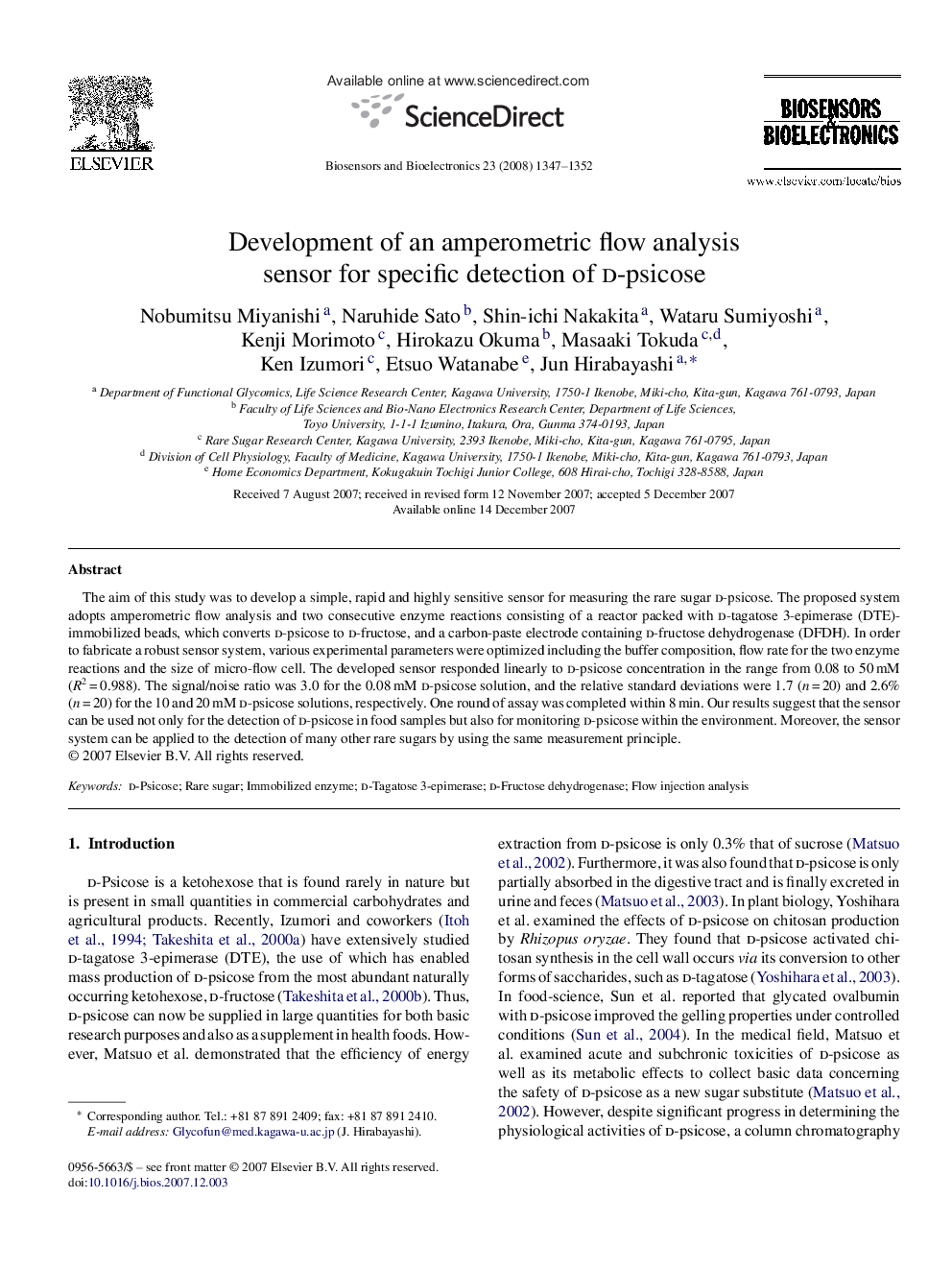| Article ID | Journal | Published Year | Pages | File Type |
|---|---|---|---|---|
| 869666 | Biosensors and Bioelectronics | 2008 | 6 Pages |
The aim of this study was to develop a simple, rapid and highly sensitive sensor for measuring the rare sugar d-psicose. The proposed system adopts amperometric flow analysis and two consecutive enzyme reactions consisting of a reactor packed with d-tagatose 3-epimerase (DTE)-immobilized beads, which converts d-psicose to d-fructose, and a carbon-paste electrode containing d-fructose dehydrogenase (DFDH). In order to fabricate a robust sensor system, various experimental parameters were optimized including the buffer composition, flow rate for the two enzyme reactions and the size of micro-flow cell. The developed sensor responded linearly to d-psicose concentration in the range from 0.08 to 50 mM (R2 = 0.988). The signal/noise ratio was 3.0 for the 0.08 mM d-psicose solution, and the relative standard deviations were 1.7 (n = 20) and 2.6% (n = 20) for the 10 and 20 mM d-psicose solutions, respectively. One round of assay was completed within 8 min. Our results suggest that the sensor can be used not only for the detection of d-psicose in food samples but also for monitoring d-psicose within the environment. Moreover, the sensor system can be applied to the detection of many other rare sugars by using the same measurement principle.
